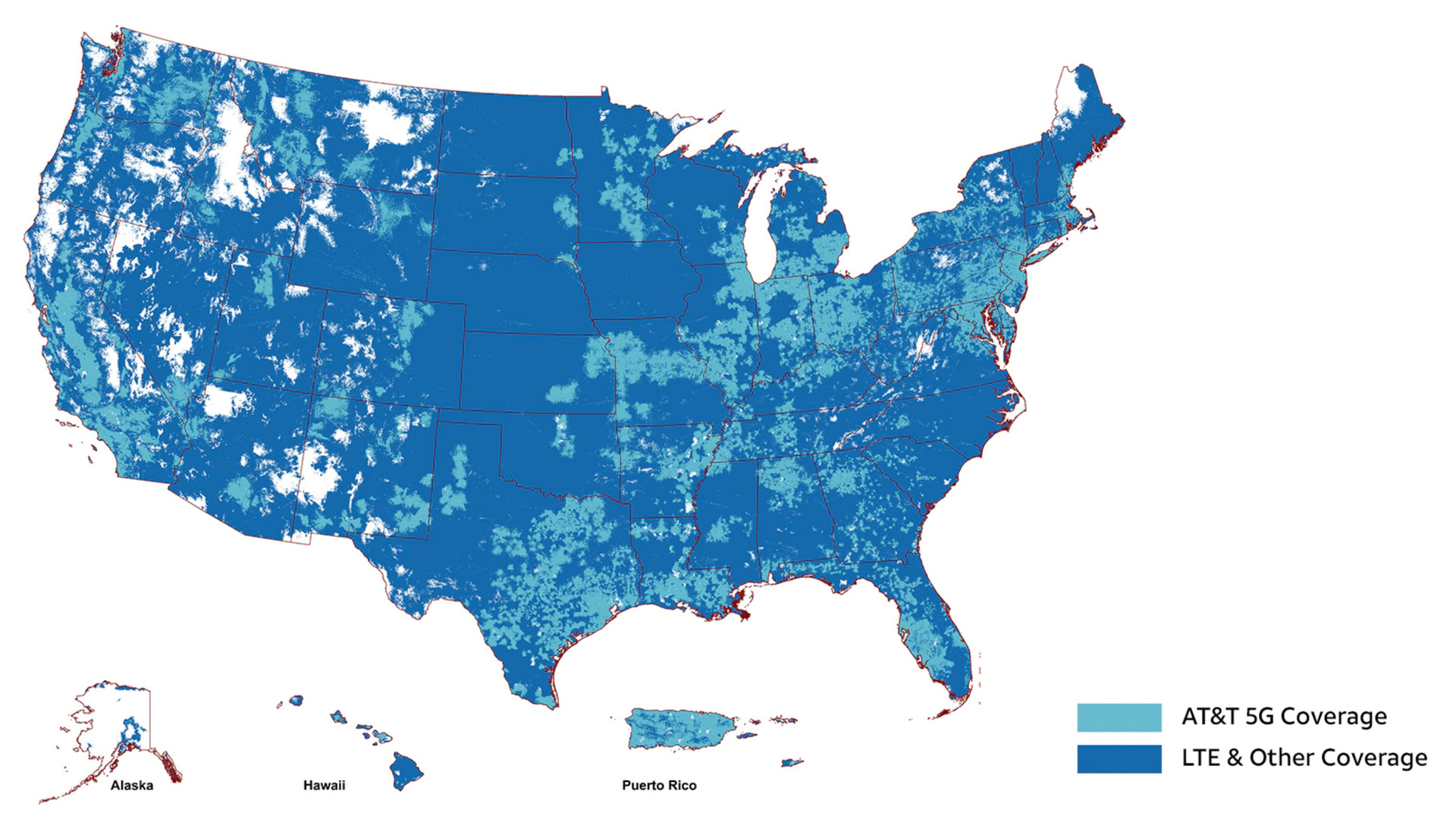A 5G network map is a visual representation of a cellular provider’s fifth-generation wireless coverage across a specific region. It allows users to check the signal availability and expected speed at their exact location or intended travel destination.
The crucial aspect of interpreting any 5G coverage map is understanding that not all 5G is the same. Carriers typically divide their 5G networks into different tiers of speed and range, which are depicted by distinct colors or labels on the map. This distinction determines whether you get incremental speed improvements or truly “blazing-fast” service.
This guide will explain the two main types of 5G coverage and compare the current state of 5G network map coverage among major U.S. carriers.

The Two Tiers of 5G Coverage Explained
The term “5G” is an umbrella for different radio frequency bands, each offering a trade-off between speed and physical reach. Carriers use various marketing names for these tiers, but they fall into two primary categories:
- Broad 5G (Low-Band / Wide-Area)
- Marketing Names: T-Mobile 5G Extended Range, AT&T 5G (Standard), Verizon 5G Nationwide.
- Performance: Offers faster speeds than 4G LTE, but not the ultra-fast speeds promised by 5G.
- Reach: Signals travel long distances and easily penetrate buildings, providing vast geographic coverage (often covering 90%+ of the country’s population).
- Map Appearance: Typically shown as the largest, lightest-colored area on a carrier’s 5G network map.
- Fast 5G (Mid-Band and High-Band)
- Marketing Names: T-Mobile 5G Ultra Capacity (UC), Verizon 5G Ultra Wideband (UW), AT&T 5G+ (Plus).
- Performance: Delivers significantly faster speeds (often 10x or more than 4G LTE). This is the true, high-speed 5G experience.
- Reach: Mid-band offers a strong balance of speed and range, covering cities and suburbs well. High-band (mmWave) is super-fast but has very limited range and is mainly found in dense urban centers, stadiums, and airports.
- Map Appearance: Typically shown as smaller, darker, or distinctly labeled zones on the coverage map.
5G Network Map Comparison: Major U.S. Carriers
Currently, there is no single best carrier nationwide; the winner depends on whether you prioritize maximum geographic coverage or the fastest speeds available.
| Carrier | Broad 5G Coverage (Reach) | Fast 5G Coverage (Speed) | Current Leader in: |
| T-Mobile | Widest low-band and mid-band coverage, covering the largest total square mileage in the U.S. | Ultra Capacity (UC) has the largest footprint of high-speed 5G. | Overall 5G Coverage and Median Speed. |
| AT&T | Strong 5G (Standard) coverage, similar to T-Mobile’s wide area. | 5G+ coverage is strong in major cities, airports, and business districts, but the high-speed area is smaller than T-Mobile’s UC. | Most Consistent Speed/Reliability (Across 4G/5G). |
| Verizon | Extensive 5G Nationwide (low-band) population coverage. | Ultra Wideband (UW) often delivers the fastest speeds but in a much smaller geographic area (primarily dense urban zones). | Rural 4G LTE Coverage and fastest peak High-Band speeds in select areas. |
Expert Tip: Before switching carriers, use the official, interactive 5G network map on the carrier’s website and check your specific home and work addresses—do not rely solely on the broad, nationwide map view.
Frequently Asked Questions (FAQ)
How accurate are 5G coverage maps?
Coverage maps are estimates. They show the anticipated outdoor coverage based on mathematical models, not a guarantee of service. Actual reception can be blocked by factors like:
- Thick walls or building materials (especially for high-band 5G).
- Terrain (mountains, deep valleys).
- The type of 5G phone you own.
How can I check the 5G map for my exact address?
You must visit the official coverage checker on the carrier’s website (e.g., T-Mobile, Verizon, or AT&T) and type your specific address and ZIP code. Most sites provide a detailed street-level map differentiating between the fast and broad 5G layers.
Why does my phone show 5G but my speeds are slow?
Your phone is likely connected to the Broad 5G (Low-Band) signal. While technically 5G, this signal often uses repurposed, lower-frequency spectrum to achieve wide coverage, resulting in speeds that are only marginally better than, or sometimes identical to, high-speed 4G LTE. To get truly fast speeds, your phone needs to connect to the Mid-Band or High-Band signal (Ultra Capacity/Ultra Wideband).


